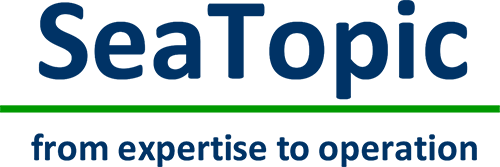About: our fields of interest
Navigating in future: What will be digital navigation?
Navigation safety and security, efficiency and quality strongly depend on access to comprehensive, qualified, updated and geo-referenced information on the situation over the area of interest. This is often summarized as „situational picture“. On board situational awareness requires integrating information transferred from land based stations (alerts, meteocean data, AIS, etc.) with those provided by on board equipment like radars, digital charts as well as ship side operational environment like rudder position or propeller pitch.
Situation awareness requires collecting, transmitting, integrating, diffusing the right information in real time or near-real time. Research, development and standardization works are progressing on the different components of this digital information chain. The paper analyses the future generation of digital information and communication services for maritime transport: shipping, ports, maritime institutions in charge of maritime surveillance/safety, etc.
Starting from state of the art, with use cases and success stories, the paper addresses concept and fundamentals of the incoming generation of digital navigation.
It focuses on 3 components developed by French and German SME in synergy with relevant national and international institutions (IMO, IHO and WMO).
1. A data transmission system: the „NAVDAT“, developed by Kenta Technology/ France. It is a new release of the IMO certified NAVTEX transmission system. NAVDAT offers extra bandwidth with new frequencies allocated by ITU. This technological rupture opens the door to the bidirectional transfer of real time information between land and sea, in particular of oceano-meteorological data and comprehensive picture of the navigational situation.
IMO requests a demonstrator to promote the system as a standard.
2. A high resolution production chain of meteo-oceanographic data based on HF radar (currents, wind and waves)). The technology is provided by Helzel Messtechnik/ Germany. It targets application is maritime safety. Once assimilated into coastal met-ocean models, this data can provide extended coverage forecast capabilities. SeaTopic/ France assures the modelling capacities in partnership with meteo service providers and academia.
3. A digital maritime chart production/ visualisation system used by ships, port, pilots, etc. The tool and derived products are provided by SevenCs /Germany, recognised by IHO for the quality of its digital charts management tools. The project Nav2020 will offer real time meteo-oceanographic services on top of the digital charts one main component of „e-navigation“ to be integrated into ECDIS (Electronic Chart Display and Information System).
The paper addresses a call for interest to the audience. Adoption of these techniques – NAVDAT and e-navigation services and tools require setting up a large scale demonstrator, including end users and relevant standardisation and regulation bodies like IMO, IHO, IALA and WMO.
Contact us
[1] Authors and contributors:
SeaTopic (project idea and development), Kenta Technologies (transmission system),
SevenCS/ Geomod (digital charts),
Helzel (HF radar),
Roberto Mayerle, Kiel University (modelling/simulation)
